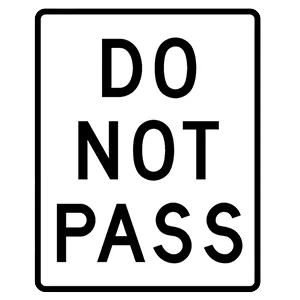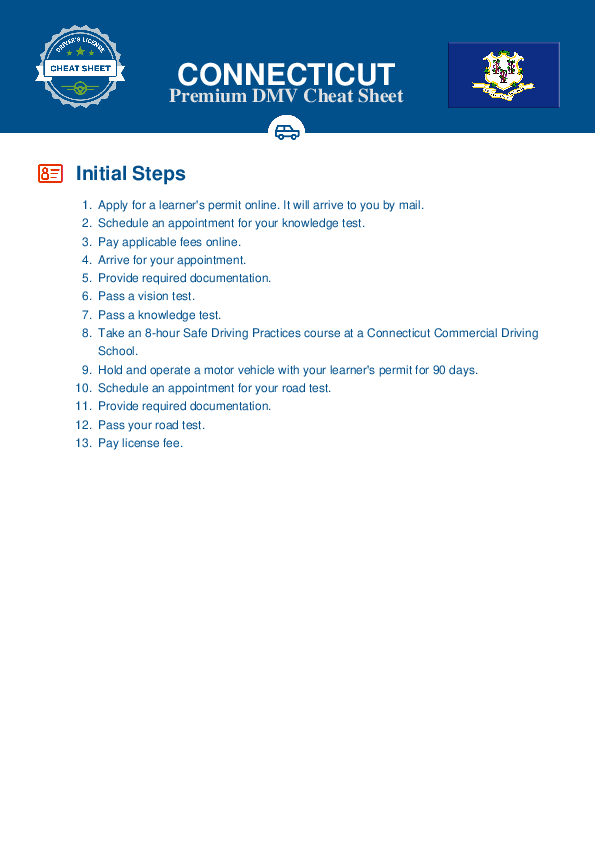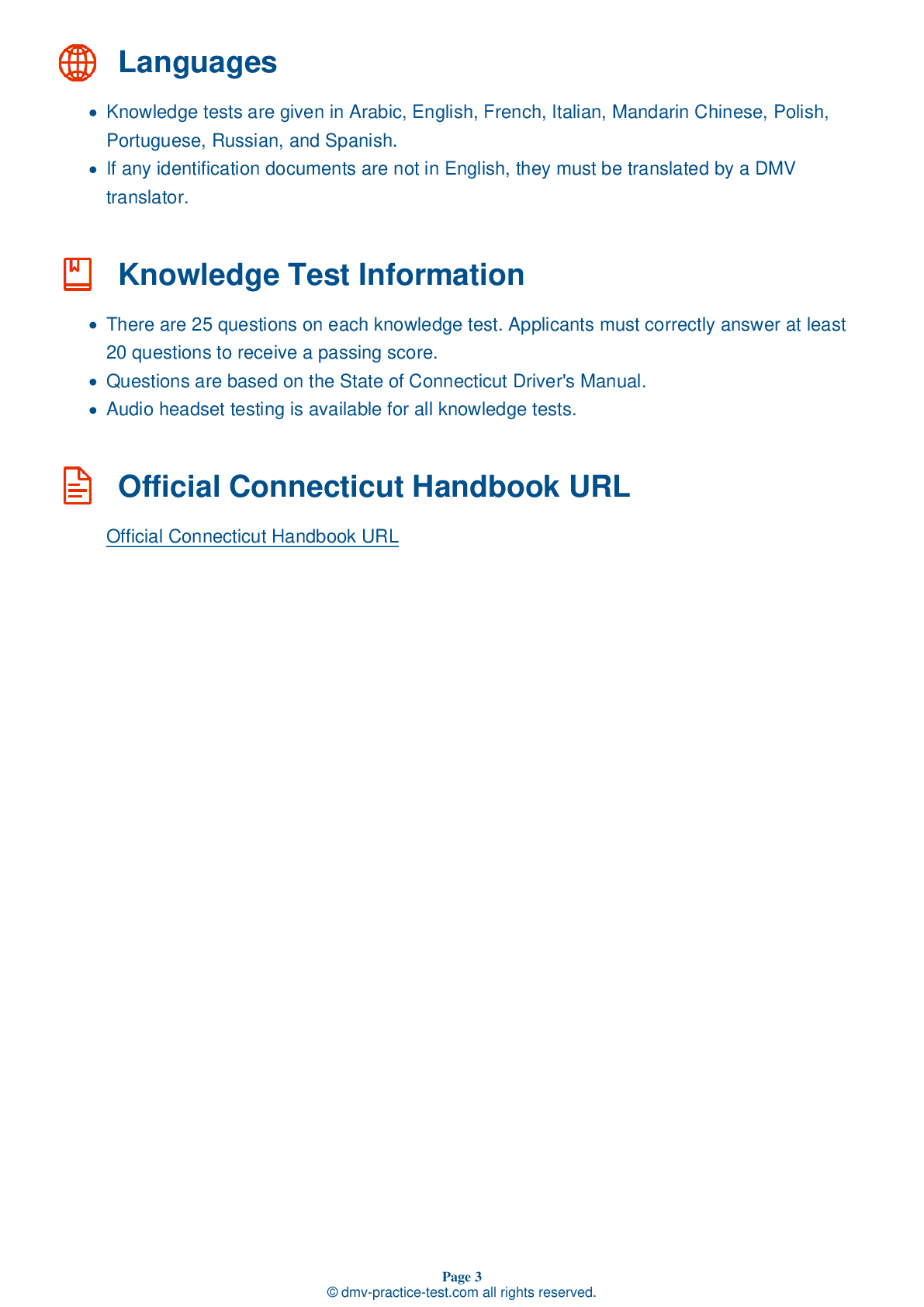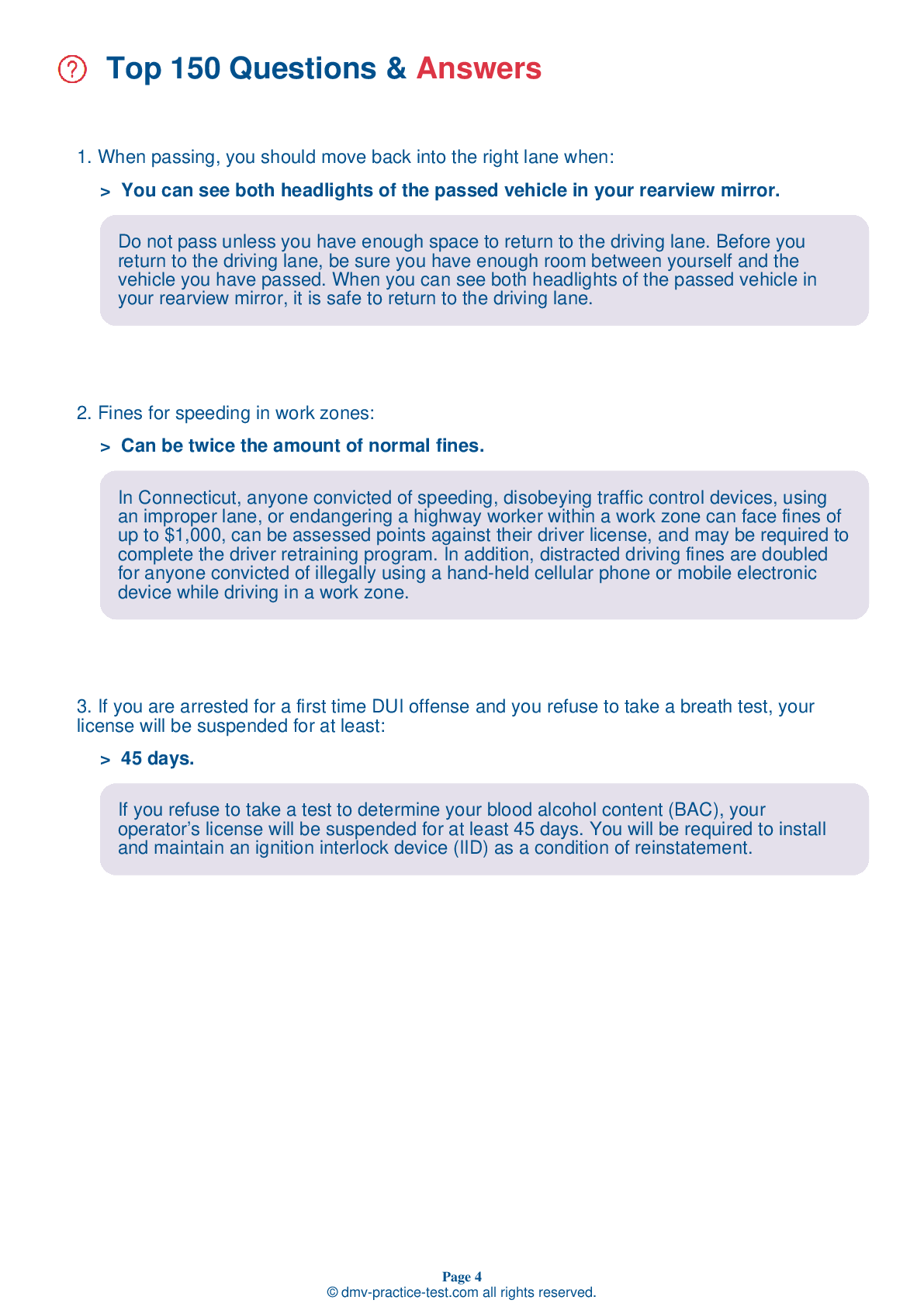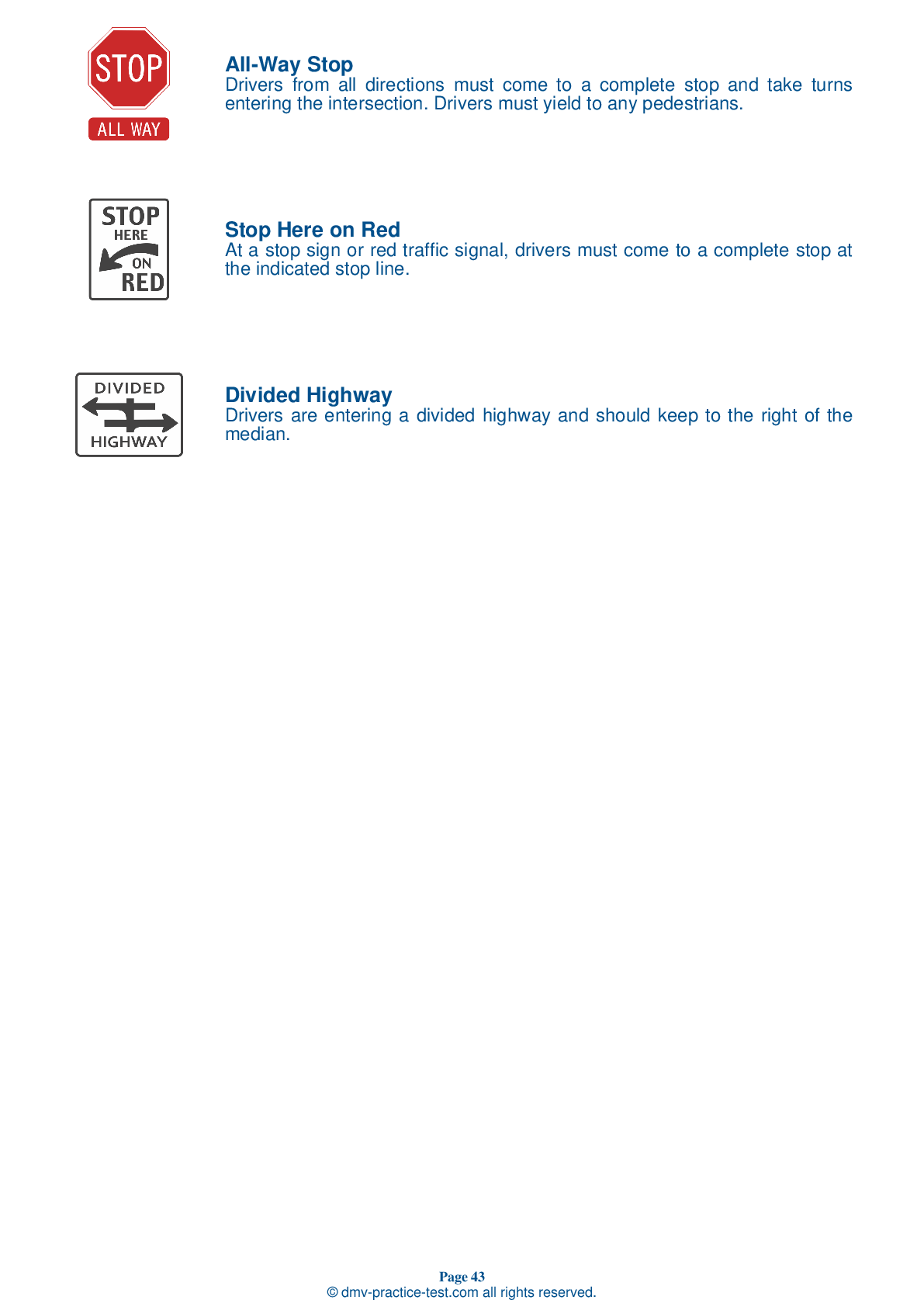FREE Connecticut DMV Practice Test #4 Page 2 of 3
This set of Connecticut DMV practise tests was just updated for January 2026. It includes questions based on the Connecticut Driver Handbook's most essential traffic signs and regulations for 2026. Use actual questions that are very similar (often identical!) to the DMV driving permit test and driver's licence exam to study for the DMV driving permit test and driver's licence exam.
Each practise test question has a hint and explanation to assist you in remembering the concepts. The written component of the official DMV test will include questions about road rules, traffic signs, and driving statutes, as well as information from the Driver Handbook.
To achieve the required passing grade, you must correctly answer 20 of the 25 questions. Take our DMV practise exam to help you prepare for your Connecticut instruction permit or driver's licence.
The DMV exam is available in several languages.
Using any form of testing help will result in an automatic fail, and the DMV may take further action against your driver's licence, so avoid it.
9 . A large truck is ahead of you and is turning right onto a street with two lanes in each direction. The truck:
When a vehicle makes a turn, the rear wheels follow a shorter path than the front wheels. The longer the vehicle, the bigger the difference between the paths of the front and rear wheels. Therefore, long trucks often have to swing wide to complete a right turn.
10 . Any amount of alcohol in the blood may affect a driver's:
A driver’s ability to safely operate a vehicle may be impaired at any BAC level, even a level lower than the legal limit. Any amount of alcohol can affect one’s judgment and physical coordination. Driving under the influence of even a small amount of alcohol can lead to criminal charges.
11 . This white sign means you should not pass other vehicles:
